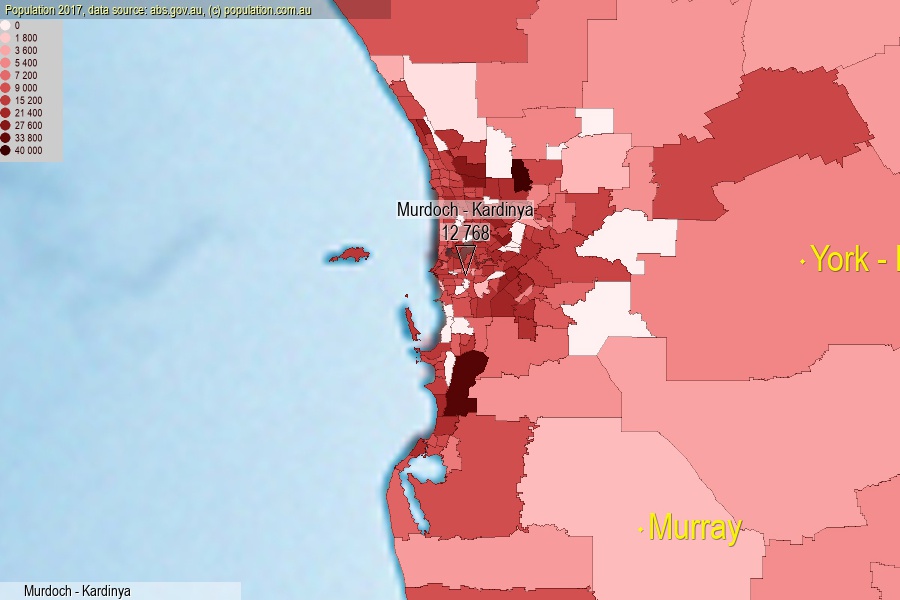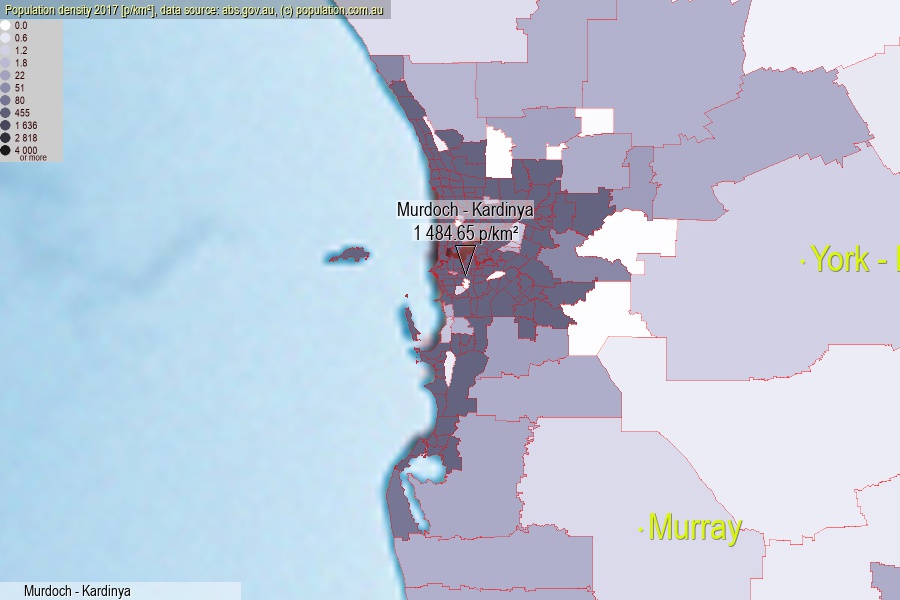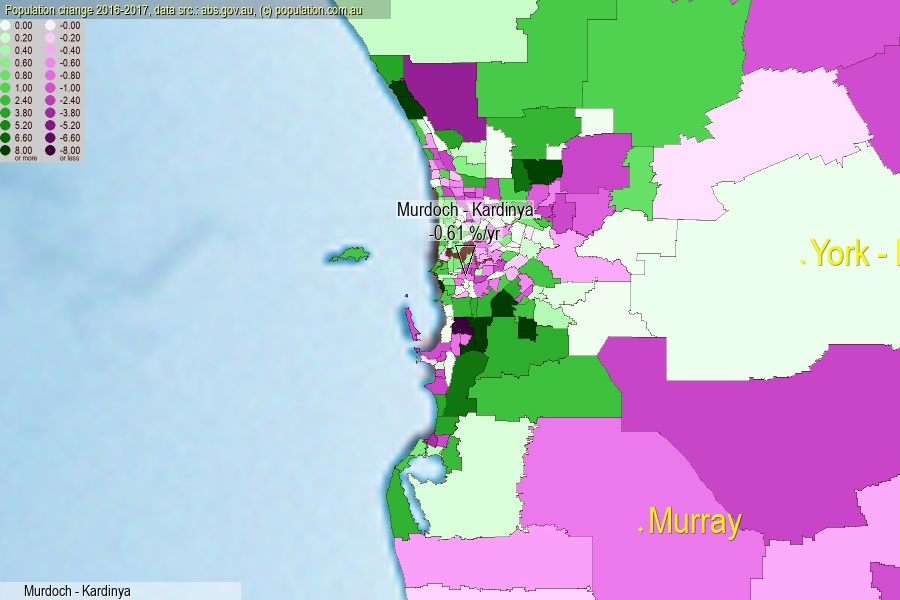 population.com.au
population.com.auLast official estimated population of Murdoch - Kardinya (as Statistical Area Level 2) was 12 768 people (on 2017-06-30)[2]. This was 0.05% of total Australian population and 0.493% of WA population. Area of Murdoch - Kardinya is 8.60 km², in this year population density was 1 484.65 p/km² . If population growth rate would be same as in period 2016-2017 (-0.61%/yr), Murdoch - Kardinya population in 2025 would be 12 161. [0]



Click to enlarge. Murdoch - Kardinya is located in the center of the images.
Population [people], population density [p./km²] and population change [%/year] [2]
View borders » (new window) [4]
[1991-1992] +4.56 %/Yr.
[1992-1993] +2.28 %/Yr.
[1993-1994] +1.12 %/Yr.
[1994-1995] +1.17 %/Yr.
[1995-1996] +1.85 %/Yr.
[1996-1997] -0.02 %/Yr.
[1997-1998] +0.02 %/Yr.
[1998-1999] +0.08 %/Yr.
[1999-2000] -0.02 %/Yr.
[2000-2001] +0.11 %/Yr.
[2001-2002] -0.70 %/Yr.
[2002-2003] -0.63 %/Yr.
[2003-2004] -1.18 %/Yr.
[2004-2005] -1.20 %/Yr.
[2005-2006] -0.63 %/Yr.
[2006-2007] +0.58 %/Yr.
[2007-2008] +0.30 %/Yr.
[2008-2009] +1.83 %/Yr.
[2009-2010] +0.72 %/Yr.
[2010-2011] +0.92 %/Yr.
[2011-2012] +0.73 %/Yr.
[2012-2013] +0.34 %/Yr.
[2013-2014] -0.20 %/Yr.
[2014-2015] -0.35 %/Yr.
[2015-2016] -1.14 %/Yr.
[2016-2017] -0.61 %/Yr.
[0] Calculated with linear interpolation from officially estimated population
[1] Read more about SA2 and Australian Statistical Geography Standard (ASGS) on abs.gov.au
[2] Population data from Australian Bureau of Statistics (Population and density: 2017; change: 2016-2017)
[3] Digital Boundaries: Australian Statistical Geography Standard (ASGS) 2016.
[4] Border coordinates are simplifyed using Ramer-Douglas-Peucker algorithm.